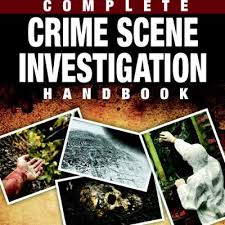Crime scene investigation is an indispensable part of our work, which will have a direct impact on the success of the criminal investigation. With Technological progress and changes in Social situations, scene investigation work is facing unprecedented challenges. The standardization of the crime scene investigation should be the goal of all police agencies. Therefore, promoting the standardization of the crime scene investigation is necessary.
As a criminal justice system, the crime scene investigation also has the basic rules and characteristics of the system. So the system can be applied in the field of the standardization of the crime scene investigation. Scientific investigation means applying the knowledge, methods and technology which is caused by the development of science and technology to the criminal investigation. Crime scene investigation is the work conducted on the physical evidence as the center-site. Investigation is a traditional method, in addition to which, many other measures that can used in the crime scene investigation are method with scientific and technological. Crime scene investigation needs to integrate the use of a variety of scientific and technical means to detect, collect and storage of the evidence, which is the most concentrated expression of scientific investigation.
Obstacle of Standardizing Crime Scene Investigations
The biggest obstacle to standardizing crime scene investigations is funding. Many organizations and government committees are working on this issue of standardization and a lot of great ideas and methods are being adapted. However, with standards in place, funding will have to made available for proper, ongoing training. Many, if not most, police agencies will agree with the fundamental fact that a set of standards are needed, but they will also quickly say that budgets restrict the resources of time and money to set in place and train for these standards
Why Standardizing Crime Scene Investigations is important
We have all seen the issues when working with other agencies during an investigation or a new detective is hired into the department from another area. It becomes hard to work together for a while until both parties learn the other’s way of doing things, neither may be right or wrong, but different. This costs time, money, and can stall an investigation. Another primary reason for Standardizing Crime Scene Investigations is that these standards will equip investigators with the latest in technology and methods which will clear cases faster, and prosecutions will be more successful.
In the United States there are over 21,500 police departments with 20 or fewer officers. These officers do the best they can with what they have, but many lack training and standardized approaches to criminal investigations.

Everett Baxter Jr. has an Associate Degree in Applied Science – EMS and a Bachelor’s of Science in Chemistry. He has over 23 combined years in law enforcement. He is currently assigned to the Crime Scene Unit of the Oklahoma City Police Department. Mr. Baxter was previously employed with the Norman Police Department where he worked in the EMS and Patrol Divisions. Mr. Baxter has presented numerous lectures and seminars at conferences, educational groups and various civic groups. Mr. Baxter has been court qualified as an Expert in Crime Scene Investigations, Crime Scene Reconstruction, Bloodstain Pattern Analysis, Shooting Scene Reconstruction and 3D Sketches in both District Court and federal Court. Mr. Baxter has written papers on the Effects of Cleaning Products on Bloodstains (co-authored), Alternate Light Source. Mr. Baxter has written the books the Complete Crime Scene Investigation Handbook and the Complete Crime Scene Investigation Workbook.
Public Email address: everettbaxterjrforensics@



